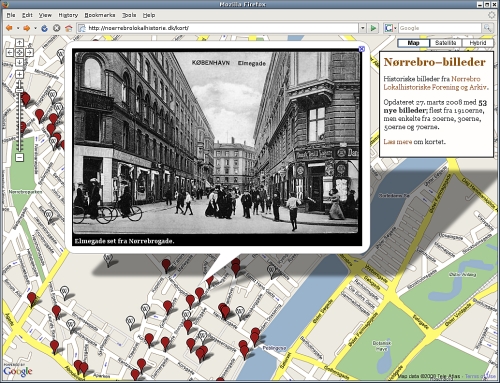 With time winding down before schools release for the holiday break, many of my colleagues are preparing educational to-do lists when thinking about 2009. I suppose it is only appropriate that I also attempt to brainstorm possible educational opportunities for next year:
With time winding down before schools release for the holiday break, many of my colleagues are preparing educational to-do lists when thinking about 2009. I suppose it is only appropriate that I also attempt to brainstorm possible educational opportunities for next year:(1) In October, my sophomores made digital storybooks using Windows Movie Maker. After studying a variety of literature focused on the theme of American Identity, they created digital storybooks to answer a question (e.g., focus on a time you felt un-American, focus on the first time you truly felt American, and explore a specific struggle or experience you have encountered as a “hyphen” American). Overall, students enjoyed the opportunity to create a culminating assessment. Because I spent multiple days in the fall teaching students how to produce these technological projects, I would like to give my students another chance at mastering the craft of media construction. Susan Sedro recently helped a group of fifth graders create movie trailers for books, and I wonder whether I could do something similar, with higher standards of course, with my students. In the spring, we are reading The Great Gatsby, and I am fairly confident I could construct a fun, innovative assignment related to the text.
(2) Like Abbi, I would also love to incorporate something with cell phones. One of the troubling issues related to the successful integration of technology in the classroom is lack of resources, and because I am a novice at the utility of cell phones, I am going to largely depend upon the
 advice and directions of experts in the field and my own students on how to use them. Recently, the International Society for Technology in Education released a new publication, by Liz Kolb, reexamining the role of cell phones in education and providing an array of educational opportunities revolving around the use of cell phones. Last week, when I came across Kolb’s Toys to Tools, I immediately contacted my Media Specialist in charge of purchasing and placed a request. I am anxiously awaiting her response. In addition to experts, I also think it is important to invite assistance from students. As David Warlick mentioned in a recent post, teachers are really Master Learners, and the sooner we welcome this title, the sooner teachers can work with students to improve their educational experience.
advice and directions of experts in the field and my own students on how to use them. Recently, the International Society for Technology in Education released a new publication, by Liz Kolb, reexamining the role of cell phones in education and providing an array of educational opportunities revolving around the use of cell phones. Last week, when I came across Kolb’s Toys to Tools, I immediately contacted my Media Specialist in charge of purchasing and placed a request. I am anxiously awaiting her response. In addition to experts, I also think it is important to invite assistance from students. As David Warlick mentioned in a recent post, teachers are really Master Learners, and the sooner we welcome this title, the sooner teachers can work with students to improve their educational experience.(3) Finally, I would like to incorporate grammar and vocabulary builders on a weekly basis. Last week, Karl Fisch reminded his readers about Free Rice. The website enables students to develop skills in a variety of academic areas, including art, chemistry, English, geography, language learning, and math, while simultaneously donating rice to the United Nations World Food Program. Everyone needs to check this out! If I did this at the start of class every Monday and Friday, students could build their grammar and vocabulary repertoires and donate food for international relief. What an awesome combination!
We’ll see what happens…






















